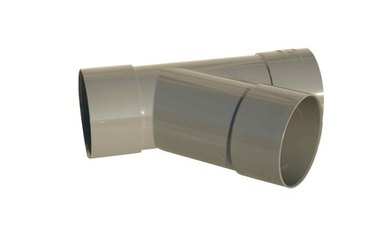Things You'll Need
Clean rag
Rubber cap
5/16-inch socket
Inch-pound torque wrench
PVC primer
Female-threaded PVC fitting
PVC cement
Male-threaded PVC cap
Adjustable wrench

When installing or remodeling the PVC plumbing of your home, you may wish to leave a section of PVC extending from your plumbing system to connect to later. To leave an extension and keep your PVC plumbing system leak-free, you need to cap the end of the PVC pipe. Two types of PVC caps installation require no cutting to remove. Rubber caps and threaded PVC caps install and remove quickly, but rubber caps are available for PVC pipe 2 inches in diameter or larger.
Installing a Rubber Cap
Step 1
Wipe the end of the PVC pipe with the clean rag. You need to ensure that there is no dirt on the outer surface of the PVC pipe.
Video of the Day
Step 2
Loosen the stainless clamp of the rubber cap with the 5/16-inch socket attached to the inch-pound torque wrench.
Step 3
Slide the rubber cap over the cleaned end of the PVC pipe, and set the inch-pound torque wrench to 60 inch-pounds of torque.
Step 4
Tighten the stainless-steel clamp with the torque wrench. Stop tightening the clamp when the torque wrench signals that the clamp is tightened to 60 inch-pounds of torque.
Installing a Threaded PVC Cap
Step 1
Apply PVC primer to the exterior surface of the PVC pipe and the internal surface of the female-threaded PVC fitting socket.
Step 2
Immediately apply PVC cement to both primed surfaces, slide the socket of the female-threaded PVC fitting onto the end of the PVC pipe while turning the fitting 90-degrees to spread the PVC cement evenly in the joint and hold the fitting in place for 30-seconds to allow the PVC cement to set.
Step 3
Turn the male-threaded PVC cap clockwise to thread the cap into the female-threaded fitting you connected to the end of the PVC pipe.
Step 4
Tighten the male-threaded PVC cap with the adjustable wrench to seal the cap to the PVC pipe.
Step 5
Turn on the water if the cap is installed on a water supply to line to ensure that the installed threaded PVC cap does not leak. If the water leaks from the threaded PVC cap, tighten the threaded PVC cap 1/4 to 1/2-turn with the adjustable wrench to stop the water leak.
Warning
Do not over-tighten the PVC cap, as this can cause the female threaded fitting to crack, and you will need to replace the threaded fitting.
Video of the Day